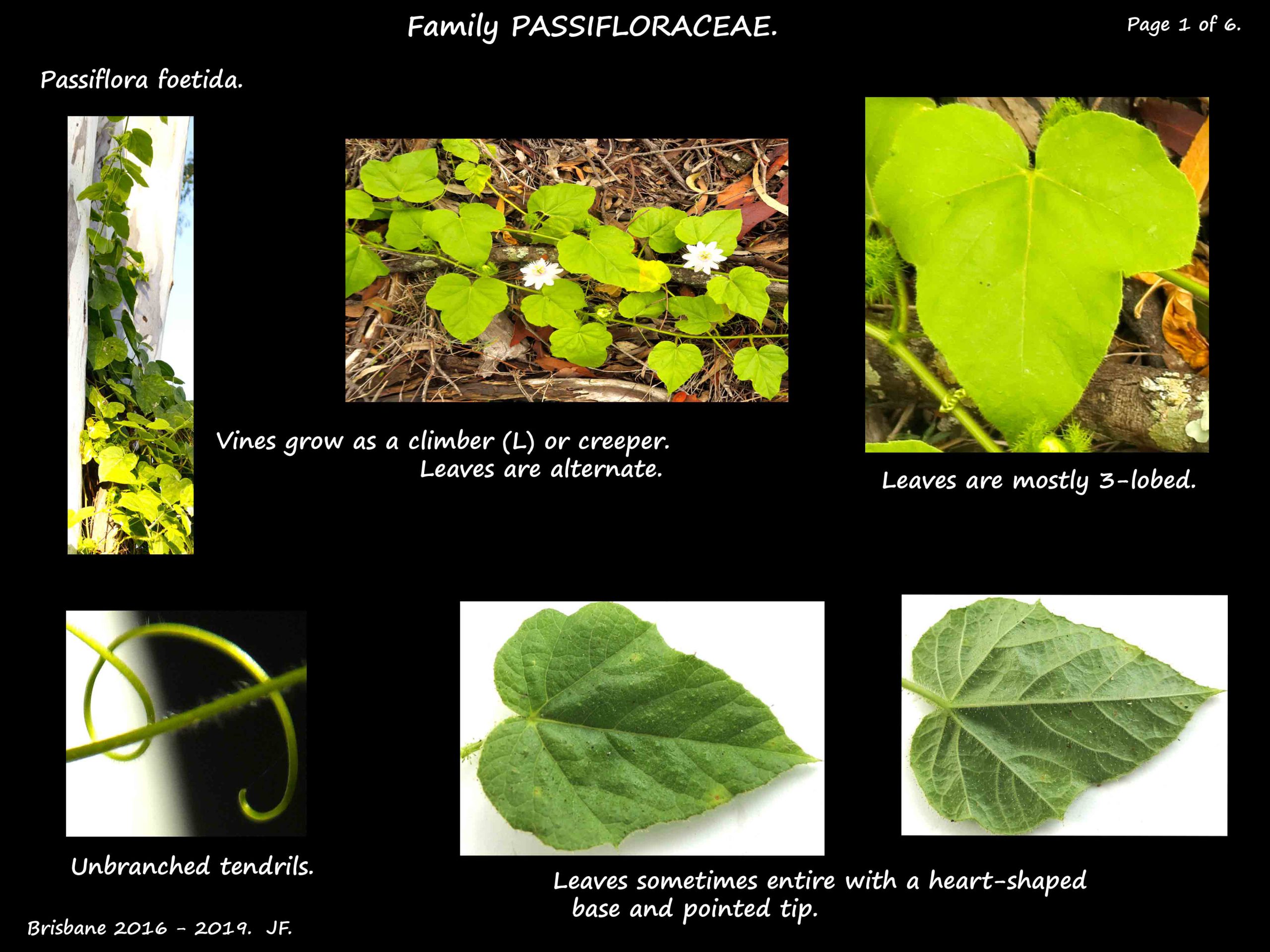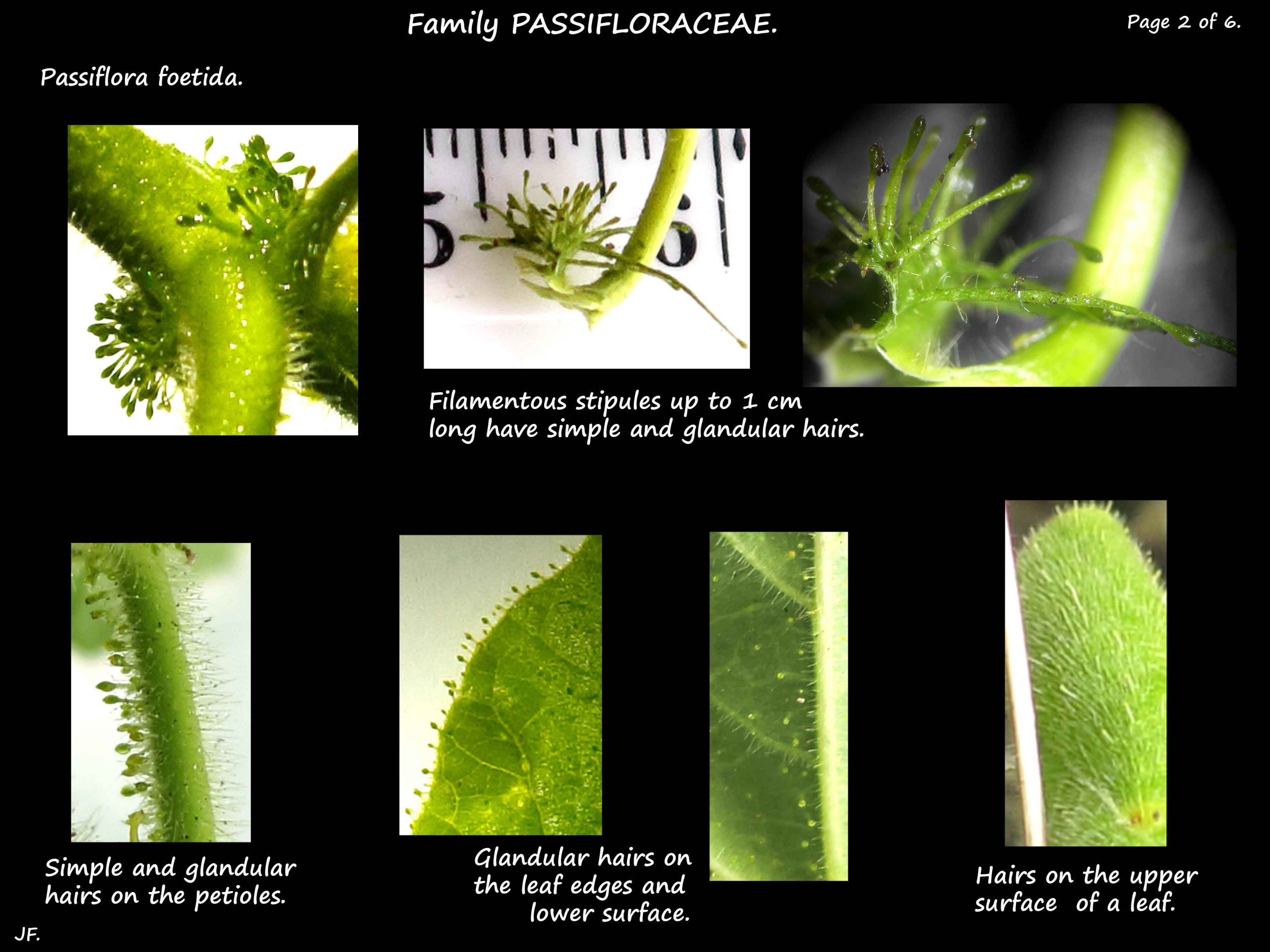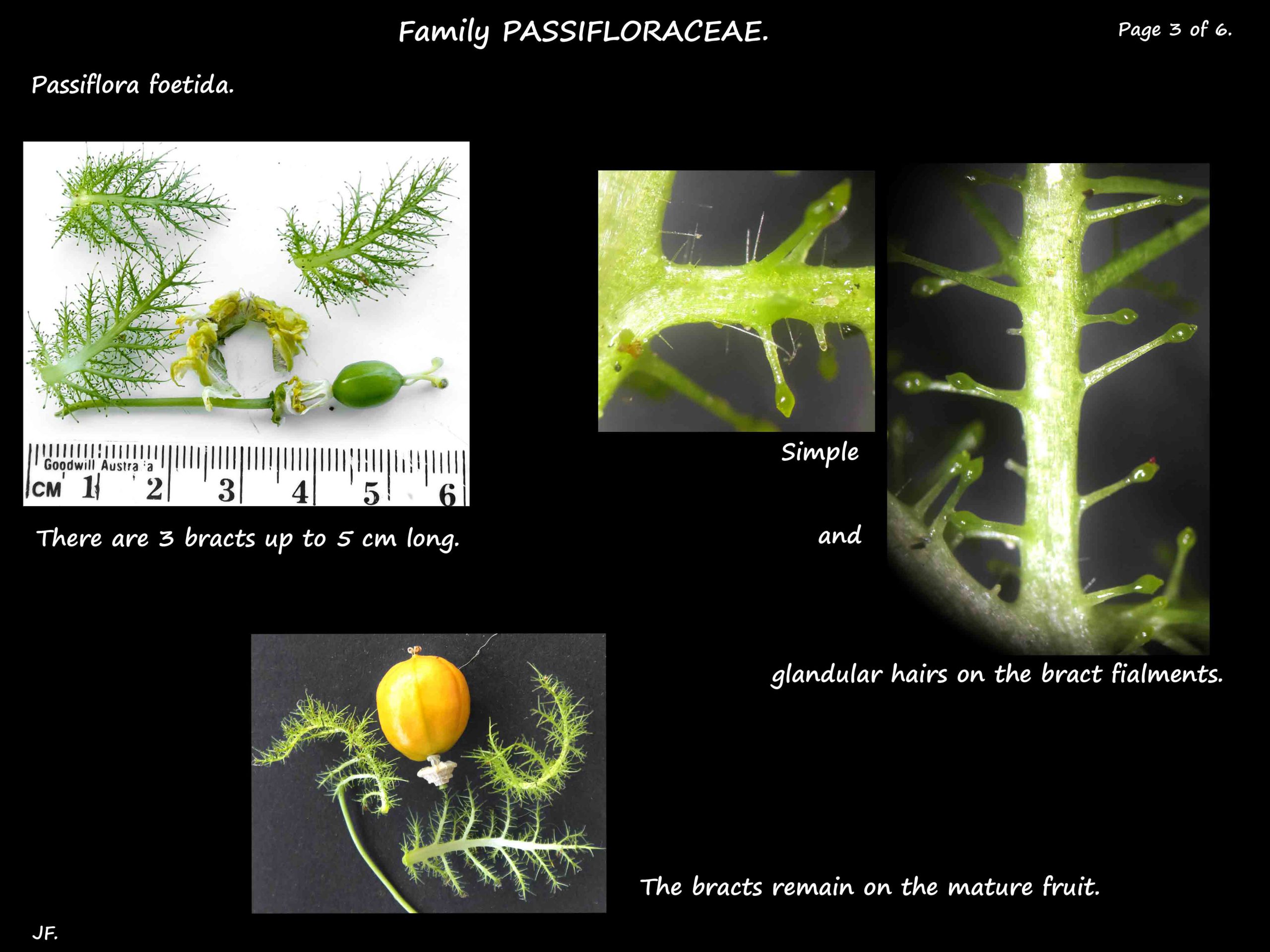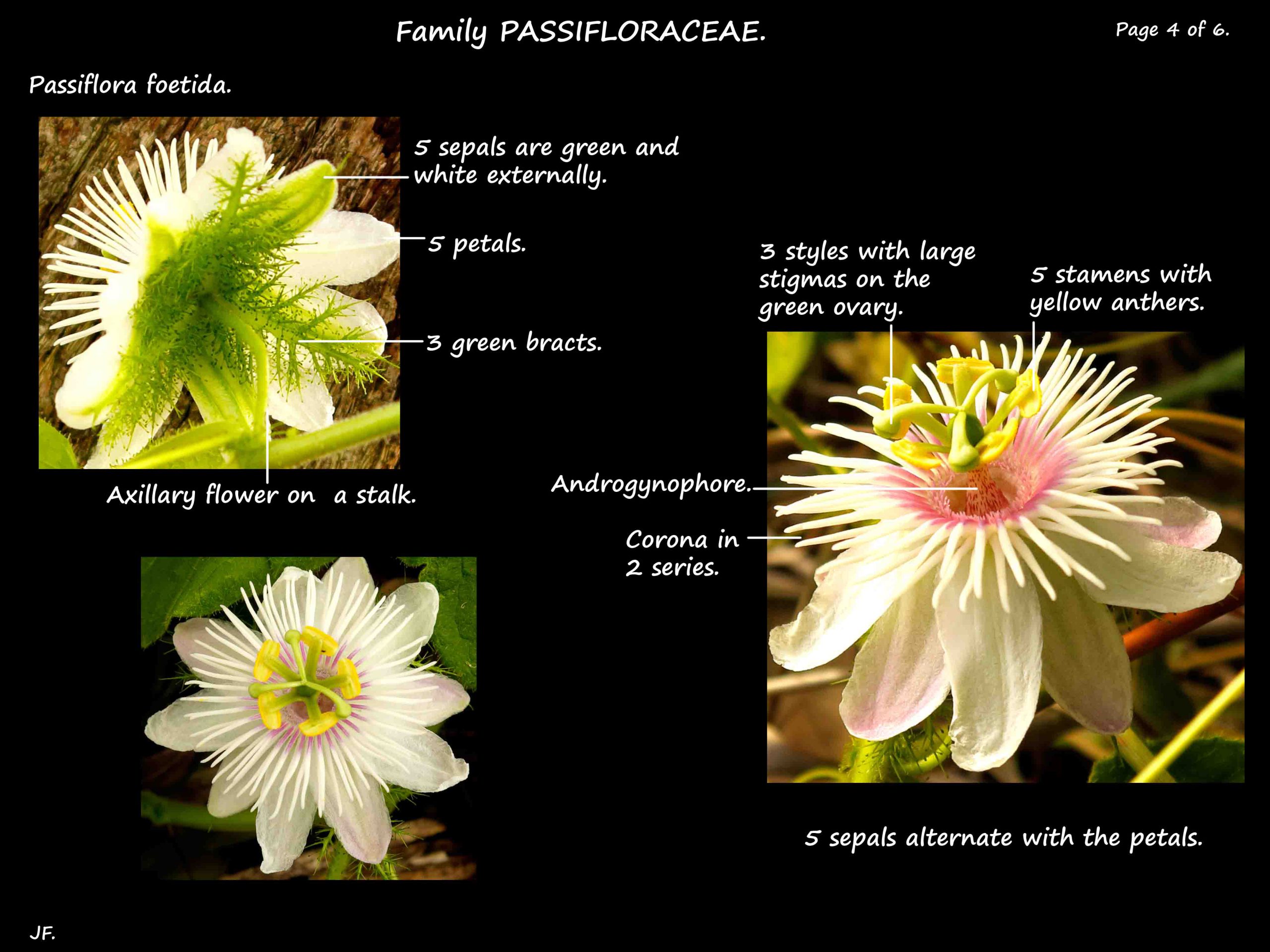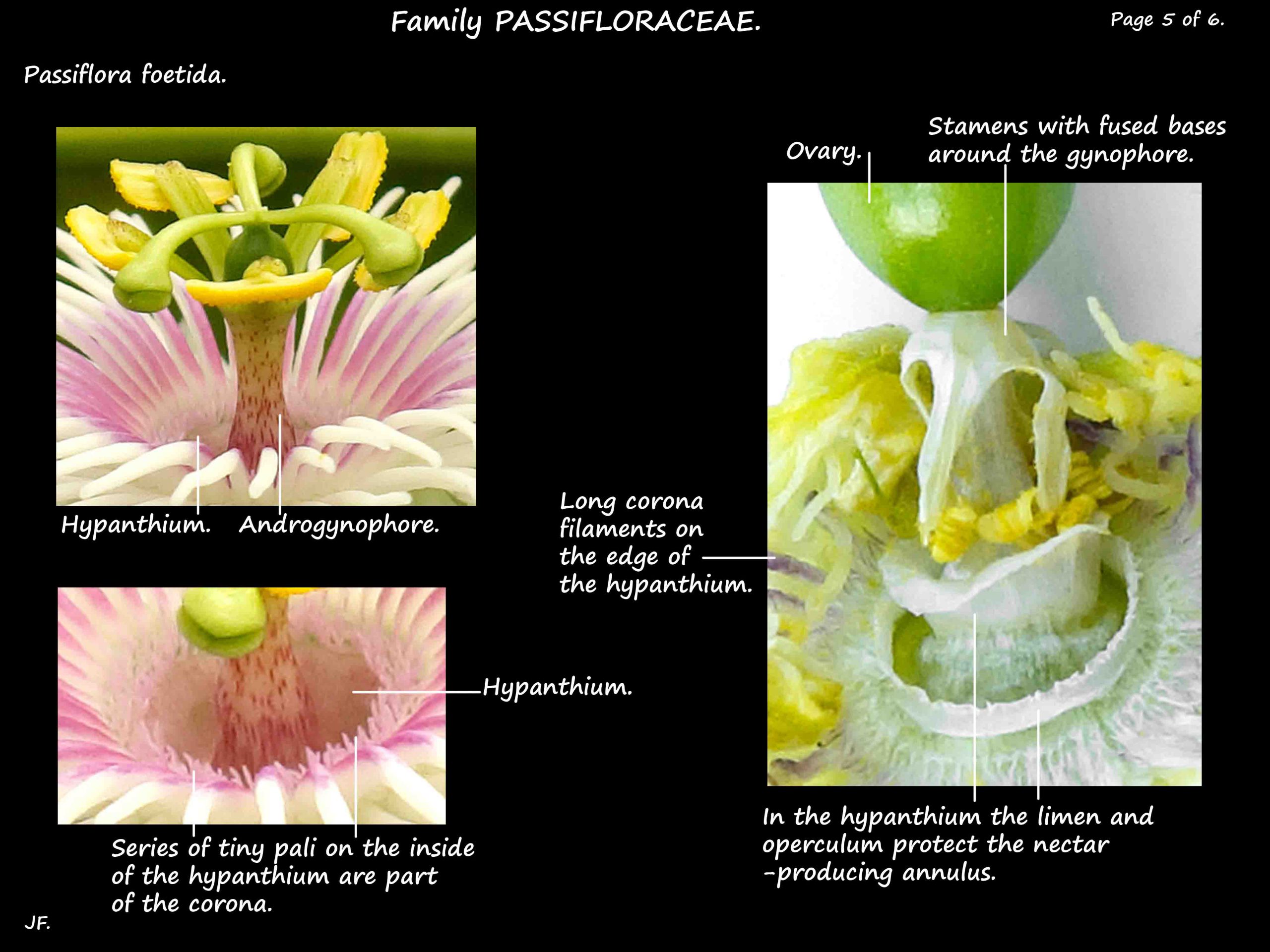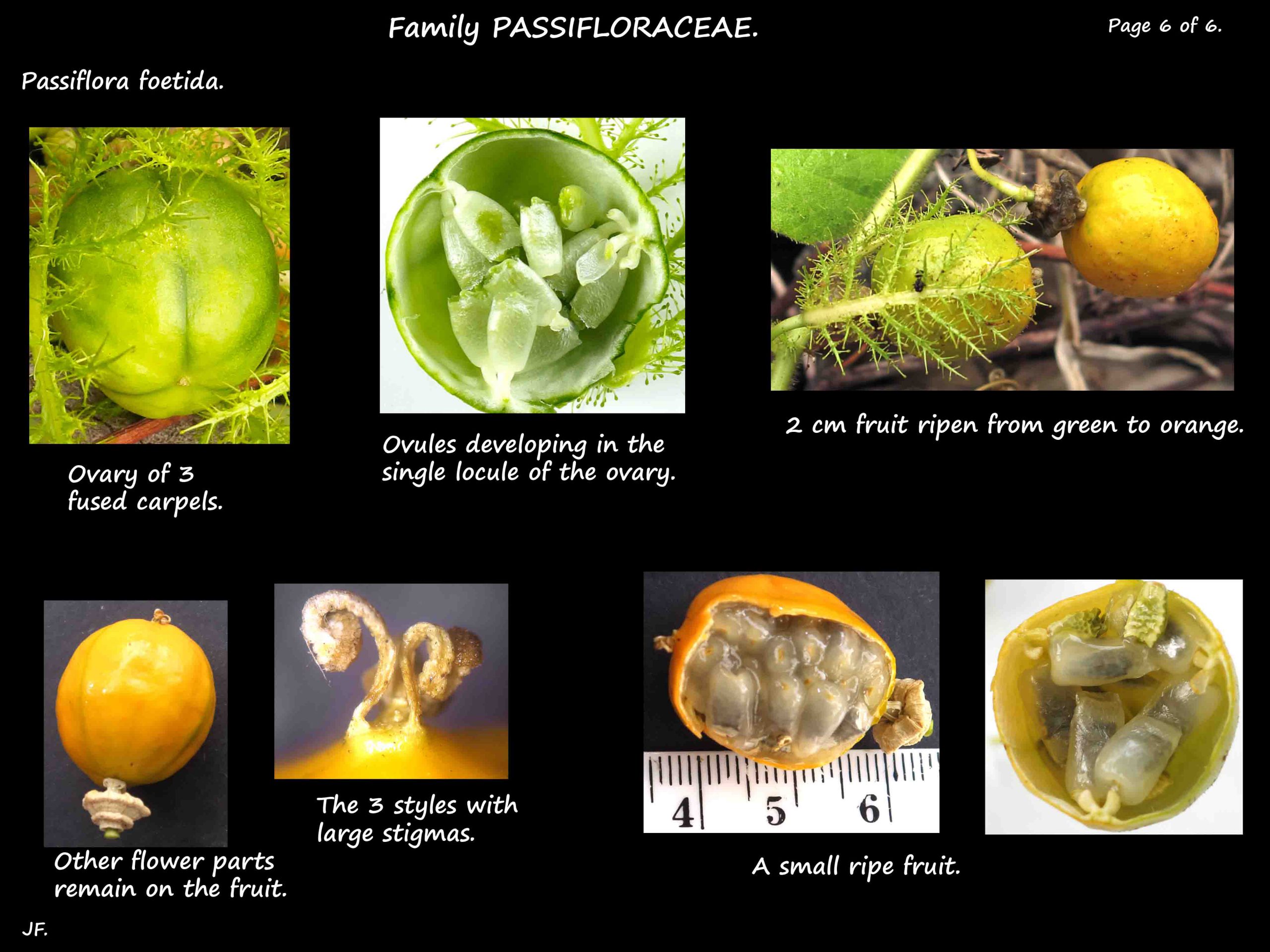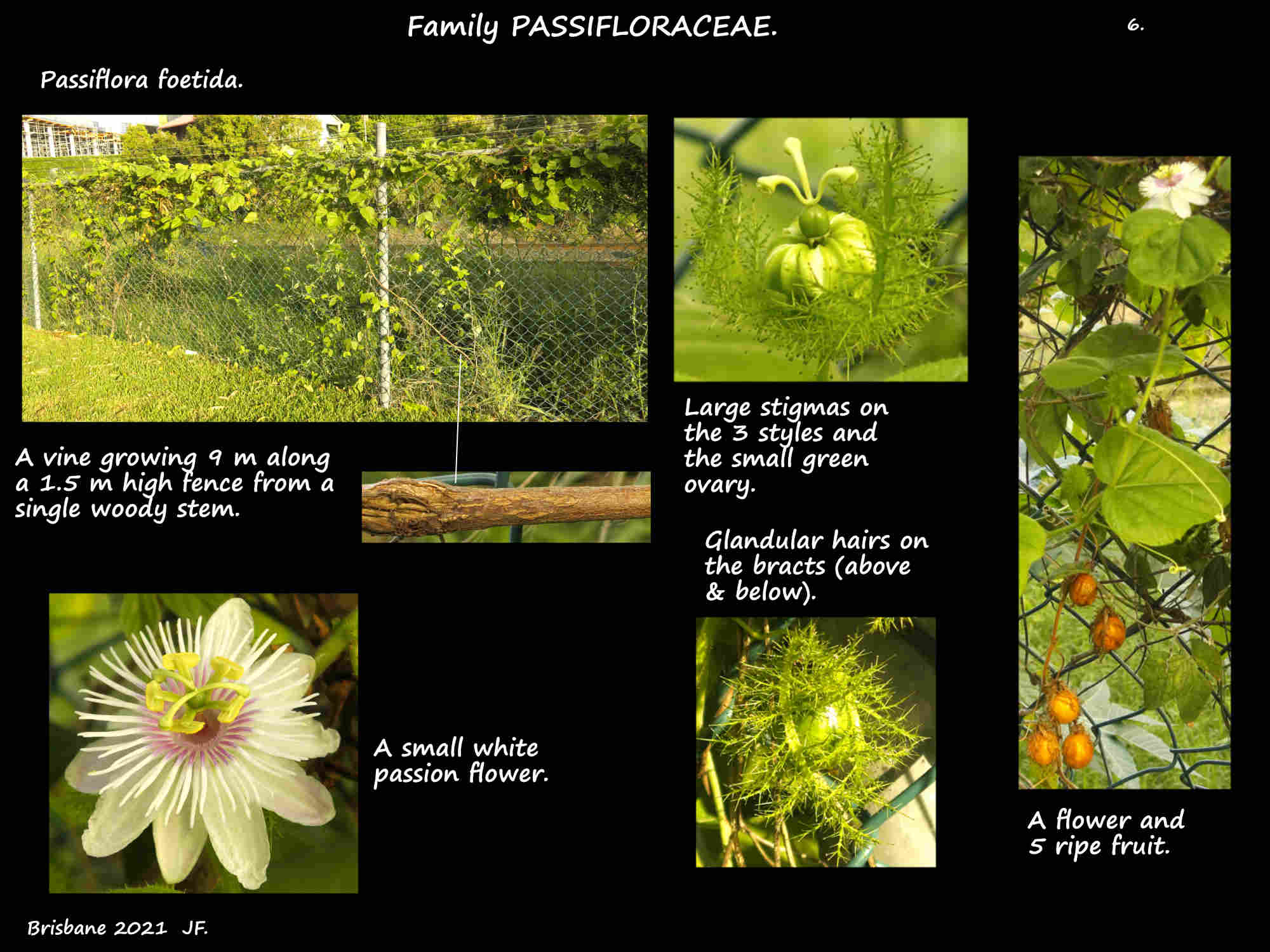Passiflora foetida – Bush passionfruit.
Family Passifloraceae.
Known as the bush passionfruit or stinking passionflower due to the smell of crushed leaves.
It is naturalised in S.E. Queensland.
A vine with wiry stems about 4 m long that become woody with age.
Stems have a few or many tiny sticky yellow or whitish hairs.
There are prominent stipules up to 1 cm long.
They can be of various shapes from wide and entire to deeply divided into thin segments.
The alternately arranged leaves are on stalks to 6 cm long.
There are axillary tendrils up to 15 cm long.
Leaves can be up to 10 cm long and wide.
The blade can be entire but is usually divided half way to the midrib into 3 (5) lobes.
Leaves have a heart-shaped base and pointed tip/s.
There are gland-tipped hairs on the stipule filaments, the leaf blade edges and the bracts.
The sticky exudate, with digestive enzymes, traps small insects.
Axillary inflorescences are usually a single flower, rarely two.
There are bracts and bracteoles up to 4 cm long that enclose the flowers.
They are deeply divided into narrow segments edged with filiform, gland-tipped, processes.
Flowers, up to 5 cm across, are on stalks up to 6 cm long.
They are white, pale cream or pink.
There is a small, saucer-shaped hypanthium.
The 5 lanceolate to ovate sepals are up to 2 cm long.
The 5 petals are shorter than the sepals.
Inside the petals is a corona of pale thread-like filaments.
There are 2 series, the outer 1 cm long and the inner are shorter.
Centrally there is a stalk (androgynophore) about 5 mm long.
At the top is the green ovary and 3, 4 to 5 mm long styles.
The 5 stamens radiate outwards from just below the ovary.
They have large, yellow anthers that open via longitudinal slits.
The fruit are almost globular berries up to 3 cm wide sometimes with a few hairs.
They are surrounded by the bracts.
Fruit mature from green to yellow or orange.
Black seeds are surrounded by bluish-white pulp.
J.F.
